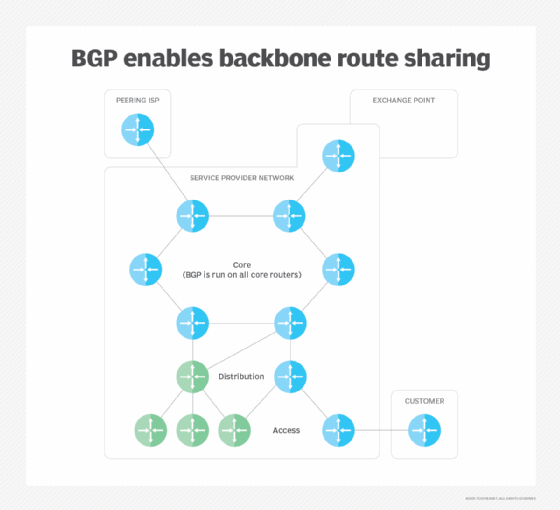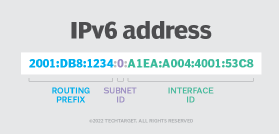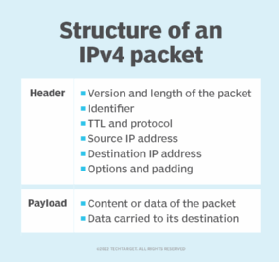Enhanced Interior Gateway Routing Protocol (EIGRP)
What is Enhanced Interior Gateway Routing Protocol (EIGRP)?
Enhanced Interior Gateway Routing Protocol (EIGRP) is a network protocol that enables routers to exchange information more efficiently than earlier network protocols, such as Interior Gateway Routing Protocol (IGRP) or Border Gateway Protocol (BGP).
EIGRIP grew out of Cisco's efforts in the 1990s to address the limitations of these protocols. For example, BGP was slow to find an alternate path if a network link went down (slow convergence), making it difficult to support Cisco's globally distributed workforce. In addition, the protocol didn't provide route summarization. As a result, administrators had to change routing tables manually to accommodate geographic expansions, a time-consuming process.

Cisco's need for a scalable routing protocol grew more urgent as the company prepared to connect tens of thousands of teleworker home offices to its network, a challenge similar to those faced by other large, distributed organizations. Cisco set out to develop a simple protocol that enabled network administrators to accommodate shifting requirements without needing to change the wide area network routing design, which lead to the creation of EIGRP.
What type of protocol is Enhanced Interior Gateway Routing Protocol?
EIGRP is an enhanced distance vector protocol that evolved from Cisco's IGRP. Although IGRP is now obsolete, a network that still uses routers based on the protocol can interoperate with EIGRP-based routers because the metrics used with one protocol can be translated into the metrics of the other protocol. A metric is the distance information used to select the most efficient loop-free path.
EIGRP can be deployed on Internet Protocol networks, such as IPv4 and IPv6, as well as networks such as Novell Internetwork Packet Exchange.

An EIGRP-based router keeps a copy of its neighbor's routing tables. If it can't find a route to a destination in one of these tables, it queries its neighbors for a route, and they, in turn, query their neighbors until a route is found. When a routing table entry changes in one of the routers, it notifies its neighbors of the change only. Some earlier protocols required sending the entire table.
To keep routers aware of the state of their neighbors, each router sends out periodic HELLO packets. A router from which no HELLO packet has been received in a certain period of time is assumed to be inoperative.
What are the basic features of EIGRP?
At the heart of EIGRP is the diffusing update algorithm (DUAL), which determines the most efficient -- least costly -- routes to reachable destinations in a network made up of routers and links. The decision is based on distance and whether a destination path is loop-free. The algorithm uses the DUAL finite state machine to track the routes advertised to its neighbors and maintain the information used by the algorithm to determine the least costly route.
EIGRP also uses a reliable transport mechanism to guarantee the ordered delivery of all EIGRP packets to its neighbors. The transport supports the intermixed transmission of Multicast and unicast packets.
To pass messages and facilitate session management, EIGRP uses five package types:
- HELLO packets. Sent out at regular intervals to facilitate the neighbor discovery process.
- QUERY packets. Used by a router to advertise that a route is in an active state and to request alternate path information from neighbors.
- REPLY packets. Sent after an entire QUERY packet has been received to acknowledge that packet's receipt.
- REQUEST packets. Used to request specific information from one or more neighbors, similar to QUERY packets but sent unreliably -- no notification if delivery fails.
- UPDATE packets. Convey information about destinations and their reachability.

Unlike protocols such as IGRP, EIGRP doesn't rely on the routing table alone to hold the information needed to exchange packets. It also uses the topology table, which stores information advertised by its neighbors about their known routes. The topology table maintains details such as path reliability, total delay, feasible distance and reported distance.
What are the advantages of EIGRP?
EIGRP offers a number of advantages over earlier protocols that make it well suited to large enterprise networks:
- increases availability through faster convergence, helping to avoid disruptions in the event of a link outage;
- improves voice and video quality by avoiding routing loops and supporting almost immediate convergence;
- simplifies operations and lowers costs because administrators don't need to manually update the routing design to accommodate changes;
- minimizes network resource usage during normal operations because only HELLO packages are transmitted when the network is stable;
- reduces the protocol's load on the network because only changes to the routing table are propagated, rather than the entire routing table; and
- uses links more efficiently by utilizing equal-cost multipath and unequal-cost load balancing.
After implementing EIGRP, Cisco was able to support about 25,000 employees who worked from their home offices and connected over virtual private networks at least once a day. In June 2013, EIGRP became an Internet Engineering Task Force Internet Draft and is now in the Request for Comments phase (RFC 7868).






